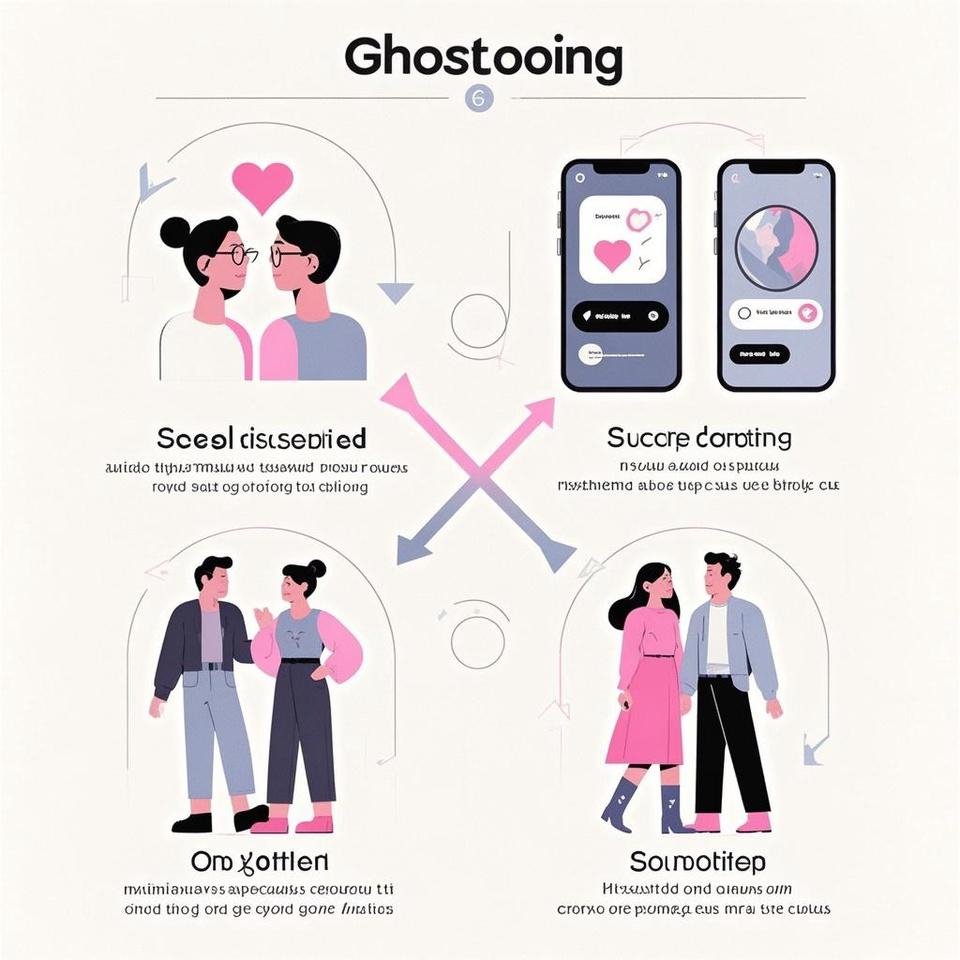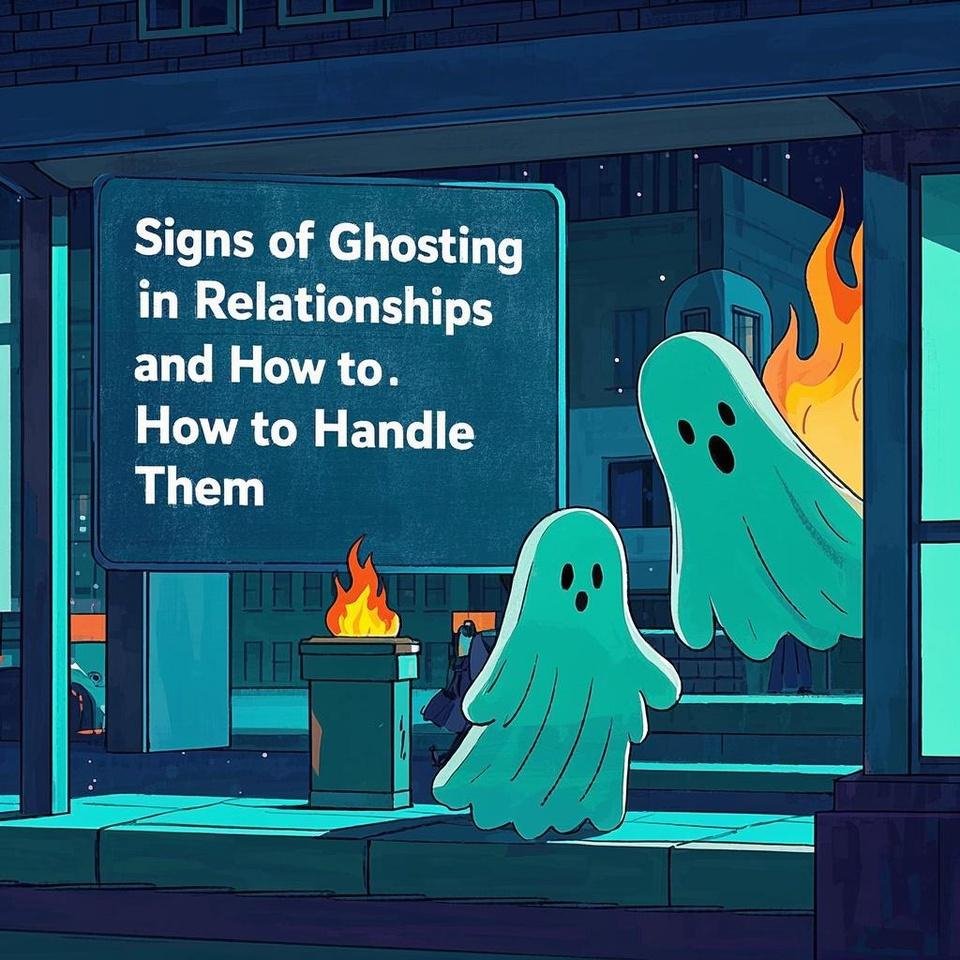
In today’s digital world, ghosting types are becoming increasingly common in dating, friendships, and professional relationships. The sudden disappearance of someone without explanation can be frustrating and emotionally damaging.
Understanding different ghosting types can help you recognize early signs, comprehend why people ghost, and learn how to handle the emotional impact. In this article, we’ll break down the various types of ghosting, why they happen, and strategies to deal with them effectively.
What Is Ghosting?
Ghosting is the act of suddenly cutting off all communication with someone without any explanation. It’s most commonly associated with romantic relationships, but it can also occur in friendships and workplaces.
The psychological effects of ghosting can be severe, leading to self-doubt, rejection, and emotional distress. Recognizing different ghosting types can help you navigate relationships more effectively.

The Different Ghosting Types & Their Impact
1. Classic Ghosting: The Sudden Disappearance
Definition:
Classic ghosting is the most common type of ghosting, where someone vanishes completely without warning.
Signs of Classic Ghosting:
- No responses to calls or texts.
- No explanation or closure given.
- Complete disconnection on social media.
Emotional Impact:
- Creates confusion and emotional distress.
- Causes trust issues in future relationships.
- Leads to low self-esteem and rejection anxiety.
🔹 Psychological effects of ghosting
2. Soft Ghosting: The Gradual Fade-Out
Definition:
Soft ghosting is a more subtle form where the ghoster still acknowledges messages but avoids meaningful conversations.
Signs of Soft Ghosting:
- Only responding with one-word replies.
- Liking messages without engaging in a conversation.
- Gradually taking longer to reply until full disappearance.
Emotional Impact:
- Creates uncertainty about the relationship.
- Can be more painful than classic ghosting due to false hope.
3. Situational Ghosting: Temporary Disappearance
Definition:
Situational ghosting happens when someone disappears due to external factors, like stress, life changes, or personal issues.
Signs of Situational Ghosting:
- The person stops replying suddenly after a stressful event.
- They return later with an excuse.
- Communication becomes inconsistent.
Emotional Impact:
- Leaves the ghostee feeling confused and unimportant.
- Can damage trust and relationship stability.
4. Haunting: The Ghost Who Won’t Leave
Definition:
Haunting happens when the ghoster continues to engage with the ghostee’s social media without direct communication.
Signs of Haunting:
- Watching your Instagram or Snapchat stories.
- Liking your posts but never responding to messages.
- Staying present in your digital space without re-engaging.
Emotional Impact:
- Creates anxiety and overthinking about their intentions.
- Feels like emotional manipulation rather than closure.
📺 Watch this video to understand ghosting types better: Ghosting Explained
5. The Slow Fade: The Relationship Fizzling Out
Definition:
The slow fade is when someone gradually reduces communication until the relationship dies naturally without confrontation.
Signs of the Slow Fade:
- Conversations become less frequent.
- The person starts canceling plans.
- You feel them emotionally pulling away.
Emotional Impact:
- Leaves the ghostee with no closure or clear ending.
- Can be more damaging than classic ghosting due to prolonged confusion.
🔹 Understanding emotional detachment
Why Do People Ghost?
People engage in ghosting for different reasons, often linked to emotional avoidance and fear of confrontation. Common motivations include:
- Avoiding difficult conversations – Ghosting allows them to escape responsibility.
- Lack of emotional maturity – They struggle to express their feelings honestly.
- Guilt avoidance – Ghosting prevents them from feeling bad about breaking things off.
- Convenience – The digital age makes disappearing effortless.
How to Handle Ghosting & Move On
If you’ve been ghosted, follow these steps to regain emotional control:
1. Accept & Process Your Feelings
- Recognize that ghosting is not a reflection of your worth.
- Allow yourself to feel hurt, but don’t dwell on self-blame.
2. Seek Closure on Your Terms
- If needed, send a final message to express your thoughts.
- Accept that you may not get a response, and move forward regardless.
3. Don’t Chase the Ghoster
- If they’ve disappeared, let them go.
- Blocking or unfollowing can help you mentally detach.
4. Prioritize Self-Care & Healing
- Engage in activities that bring you joy (exercise, hobbies, journaling).
- Surround yourself with supportive people who respect you.
5. Learn & Set Boundaries for the Future
- Identify early red flags of ghosting behavior.
- Set expectations for open communication in relationships.
🔹 Read about setting healthy relationship boundaries
Final Thoughts: Overcoming Ghosting with Strength
Ghosting types vary from classic ghosting to haunting and slow fading, but they all share one thing—a lack of emotional responsibility.
If you’ve been ghosted, remember:
- It’s not your fault.
- Ghosting is about the ghoster’s inability to communicate.
- You deserve healthy, open relationships.
By understanding ghosting types, setting strong personal boundaries, and prioritizing your emotional well-being, you can move forward with confidence and clarity.